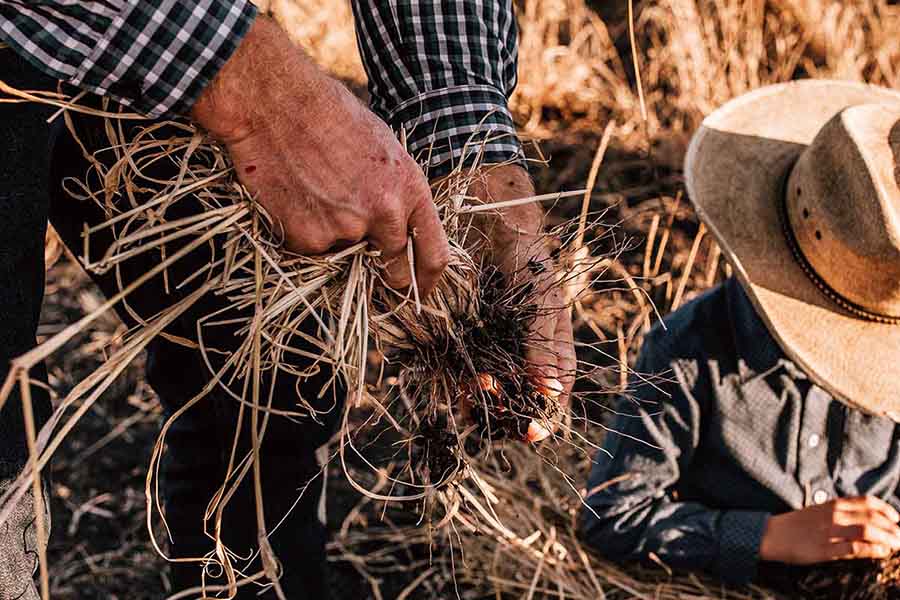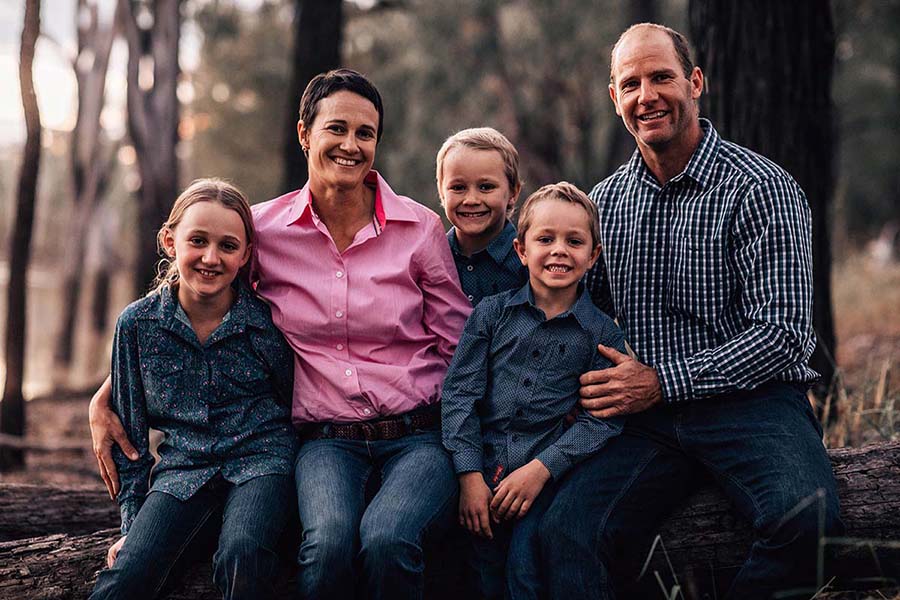Data is not going away; in fact, it's going to take on an ever-increasing role across all sectors of society, including agriculture.
In this fast-moving age of never-ending technical innovation, software updates, and cyber security concerns around personal and corporate data breaches, it's quite natural to find ourselves yearning for a time when life was simpler. The reality is, however, that data is not going away; in fact, it's going to take on an ever-increasing role across all sectors of society, including agriculture.
 Image: Amy Holcombe Photography
Image: Amy Holcombe Photography
Even if you don't know one end of an algorithm from another you might be surprised to learn that data is not a 21st-century phenomenon. Data is a commonplace agricultural tool that's been around since the dawn of record keeping when clay tablets were all the rage with the ancient Mesopotamians. In more recent times, farmers have used pen and paper to record rainfall measurements, yield weights, input and supply purchases, and sale prices. Graziers too have kept records of calving and weaning rates, weights, brands and breeding numbers. This data was kept in ledgers, diaries and pocketbooks, and often only occasionally referred to. The advent of personal computers, software and, more recently, mobile phone technology has revolutionised the accessibility and usefulness of this data for farmers and graziers. And for Central Queensland organic beef producers Jess and John Bidgood, technology has not just revolutionised their data, it's supercharged it.
For Central Queensland organic beef producers Jess and John Bidgood, technology has not just revolutionised their data, it's supercharged it.
Ten years ago, Jess and John purchased part of Tingle Hill, a 630-hectare holding around 140 kilometres southwest of Rockhampton. Thanks to a lot of hard work, and to the profitability gains aided by their embrace of data-driven management, they've since purchased Mount Cooper through succession, where they trade heifers and steers. Although the Bidgoods have all the usual hardware and farm machinery you'd find on a typical grazing property, it's the tools within their office computer and mobile phones that give this couple their competitive edge and all-important peace of mind. Jess and John employ many of the apps and programs that are increasingly commonplace in agricultural enterprises today: accounting and spreadsheet software such as Xero and Excel, as well as free weather apps and subscription-based apps such as Waterwatch. The couple also employ a raft of monitoring and measuring systems from Gallagher (fencing) and Tru-Test (individual animal performance). Central to these apps and technologies is a MaiaGrazing dashboard where all of Tingle Hill's key metrics are available at a glance, and where future scenarios can be forecast and wargamed.
For the Bidgoods, the benefits - both business and personal - of all this digital wrangling have been life changing. After completing various courses with Resource Consulting Services (RCS), and with the encouragement and support of other pioneering graziers, the couple have transitioned Tingle Hill to time-controlled grazing. Changing the property from a four-paddock, set-stocking operation to 34 cells required both real-time and over-the-horizon information to make the transition not only possible, but profitable. 'Data was a critical component in that success,' says Jess. 'It also reinforced the idea that we were actually grass farmers first, and cattle farmers second.'
The knowledge gained from RCS combined with the MaiaGrazing Grazing Management System allowed John and Jess to ensure their paddocks were always rain or drought ready. It also took the guesswork and chance out of stocking rates by offering real-time stocking rate suggestions, as well as calculating short- and long-term carrying capacity. 'Data is like a constant loop that we are always riding. It's about collecting, analysing, making decisions, then acting,' says John. 'Data helps us set baselines, set and track goals, identify the business levers within our own business, and to spot trends within the markets and industry.'
'Data is like a constant loop that we are always riding. It's about collecting, analysing, making decisions, then acting'
Data has also guided and helped the Bidgoods make some major decisions. Their ability to calculate the return on assets, whether it's investing in water and wire, or taking up new landholdings, has given the Bidgoods - and their bank manager - the confidence to expand their operations. And, as the Bidgood's have also learned, the many benefits of data don't stop at their front gate; it also has positive impacts on their community, the beef industry and the environment as a whole.
The many benefits of data don't stop at their front gate; it also has positive impacts on their community, the beef industry and the environment as a whole.
During their 10-year grazing journey with data riding shotgun, Jess and John have faced plenty of challenges, but being part of a supportive community has certainly helped. 'Everyone we looked up to and reached out to for advice was totally open and willing to share their knowledge,' explains Jess. 'We realised that to become more successful, you don't have to push others down, we can all rise together as a community and an industry.' At a local level, Jess and John are part of a peer group of local graziers, where data is shared and members take turns at hosting farm visits. 'By being open and transparent we are all learning together,' says Jess, 'and as a group, becoming more resilient and better able to respond to threats.'
One of the more recent threats is the anti-meat agenda and the negative narrative about the environmental and health impacts of the global meat industry. The Bidgoods are adamant that data transparency leads to a more authentic and informed discussion. 'It's important that we are sharing our stories and backing them up with data,' says Jess, 'so we can demonstrate that our industry is actively regenerating soil biology and sequestering carbon, taking proactive steps to protect our waterways and reefs, and tell the real evidenced-based story of how cattle work within the methane system.'
'That's why we invite scientific and university teams onto our properties,' adds John, 'so they can collect data and let the wider public know the facts.'
'It's important that we are sharing our stories and backing them up with data...'
While some voices are raising concerns around big data and who ultimately controls and gains the most benefit from it, Jess and John refuse to operate from a fear-based mindset. 'We've taken the position that we are most effective when we operate within our sphere of influence,' says Jess, 'and we see data sharing as contributing to the greater good.'
The Bidgoods believe that data sharing leads to healthier grazier representation within the beef industry and with consumers. The NLIS and Meat & Livestock Australia (MLA) national herd databases track state and interstate movements, allowing biosecurity officers to track and trace infected animals, and identify infection hotspots in times of crisis. Traceability has also become increasingly important with discerning consumers, who want to know they are supporting herd health and wellbeing, and that their dining table is the end point of a positive supply chain.
The Bidgoods believe that data sharing leads to healthier grazier representation within the beef industry and with consumers.
Despite the Bidgood's wholehearted embrace of data, they are quick to acknowledge that they represent a new generation of graziers and that going digital is not everyone's cup of tea. 'We know some incredible old-school farmers who graze purely by feel,' says Jess. 'They can just look at a beast in the paddock and estimate its age and weight with amazing accuracy.'
'We respect whatever works for you,' adds John, 'but for us, data and observation go hand in hand. The longer we've been at this, we've learned to trust our experience and gut feelings too, and data helps support those feelings.'
Judging by all the metrics on Tingle Hill and their other operations, the Bidgoods have got the balance just about spot on.
Images courtesy of Amy Holcombe Photography.



